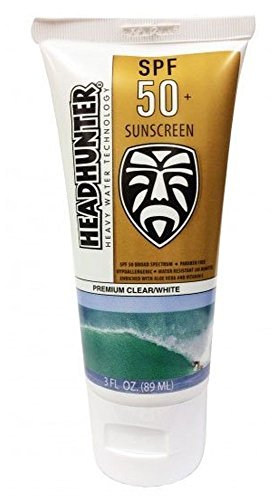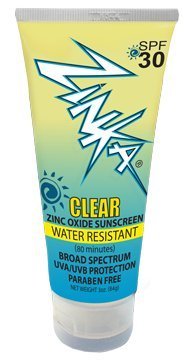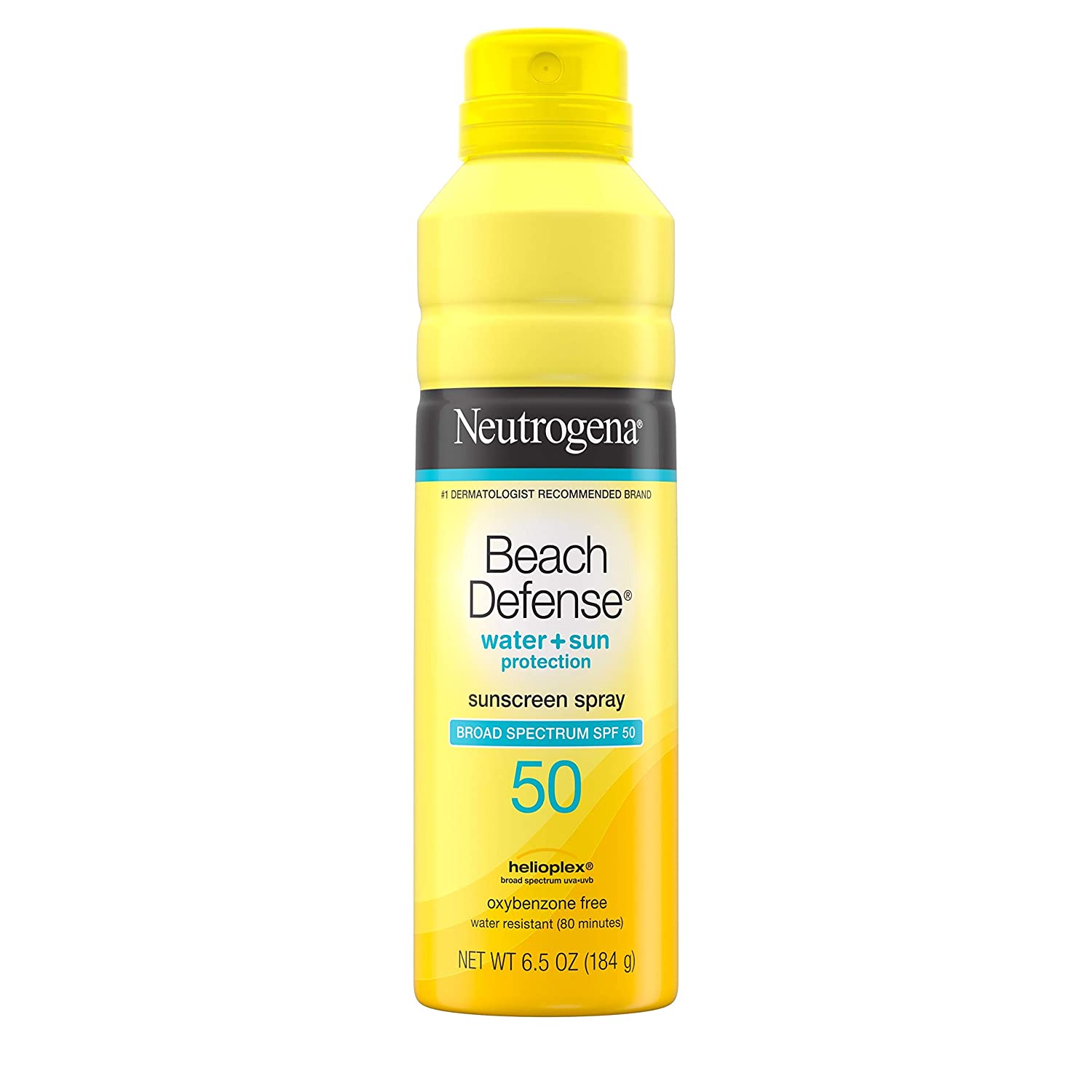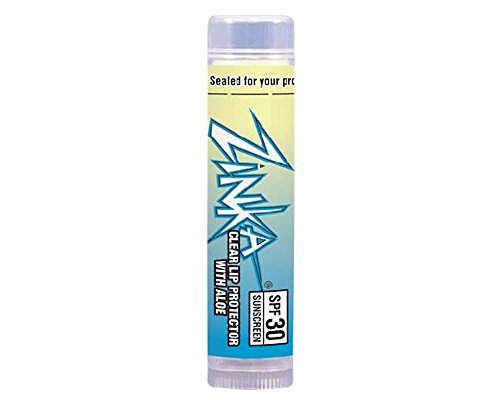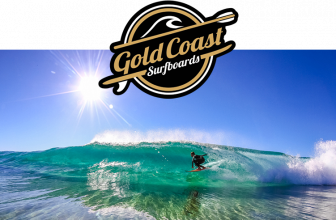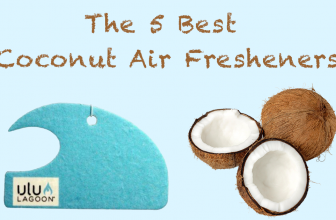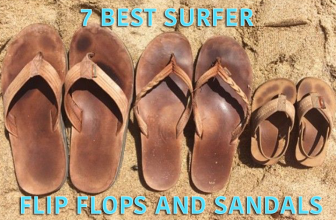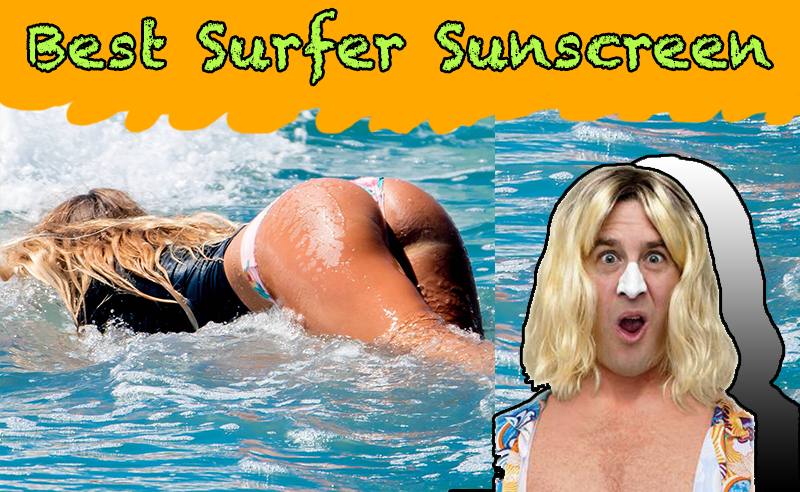
A life of fun in the sun comes at a cost if your passion is to spend most of your free time surfing in the ocean.
At A Glance: Our Top Picks for Surfer Sunscreen Lotion, Face Stick & Lip Balm
- HeadHunter SPF 50 SunscreenTop Sunscreen
- HeadHunter SPF 45 Face StickTop Face Stick
- ZINKA LIP BALMTop Lip Balm
You don’t necessarily pay up front, say when you are in your twenties and thirties, but in time, all that exposure to warm and welcoming sunshine will catch up to you.
More...
Whether the sun is glowing in a clear blue sky or hidden among clouds, harmful rays penetrate your skin, reflecting off the water to hit areas not normally exposed, and doing insidious damage that can cost you your life.
Here’s some valuable information below and all you need to know when it comes to the best sunscreens for surfers:
QUICK OVERVIEW: Our Top Picks for Surfer Sunscreen Lotion, Face Stick & Lip Balm
| IMAGE | PRODUCT | |
|---|---|---|
 | Top Sunscreen
| VIEW ON AMAZON → |
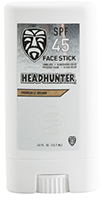 | Top Face Stick
| VIEW ON AMAZON → |
 | Top Lip Balm
| VIEW ON AMAZON → |
Best Surf Sunscreen Lotion
Our #1 Pick - HEADHUNTER SPF 50 & 30 3OZ
Offered in tinted brown or clear formula versions, Headhunter is our top pick for the best surfer sunscreen because it is paraban free, hypoallergenic, lasts longer than 80-minutes, and contains nourishing aloe for the skin.
Total protection from UVA and UVB rays, this sunscreen is non-greasy, amazingly water resistant, does not migrate from applied areas into the eyes, and is fragrance free. Surfers rave about this product’s long-lasting protection through some punishing waves and relentless sun exposure.
It goes on thick and it sticks. Tinted version leaves a color residue on the skin for added protection against the sun, and you can feel when it is wearing off as a reminder to reapply.
Likely, it is one of the best sunscreens on the market for surfers. Hardest part is getting the stuff off; warm water, soap, and a good washcloth seem to do the trick, though.
Contains 7.5% octinoxate, 5% octisalate, 7% octocrylene, and 12% zinc oxide, as well as a host of other inactive ingredients.
While only rated with an SPF of 30, Zinka contains 4.3% zinc oxide, 2.5% oxybenzone, 5% octinoxate, and 3% octisalate for comprehensive coverage.
Added to this are natural oils and waxes, as well as colors and pigments.
Compared to other products that require you to apply a half hour prior to sun exposure, you can put this sunscreen on right before getting into the water.
Out of tube it is pure white on your skin, yet with vigorous and continuous rubbing, it turns clear, goes on smoothly, does not run into the eyes, has no odor or residue, and provides long-lasting protection.
Users that reviewed this product wished it came in a larger tube size.
#3 - Neutrogena beach defense
Especially designed for extreme water athletes that spend long periods in the sun, Beach Defense by Neutrogena is a great skin protectant. Soaks in with no slippery residue, fully protects for up to 80-minutes, and is not only water resistant but sweat resistant as well.
These characteristics mean improved sunscreen performance, no chemical-laden sweat stinging your eyes and, being a broad-spectrum, it is the best protection from harmful UVA and UVB rays.
Best Face Stick Sunscreen
Our #1 Pick - Headhunters Face Stick
Transparent and tinted color versions of this dry powder formula in a stick. Specially formulated with SPF 45, you can apply it while in the water for UVA and UVB protection.
The color stays visible on your skin, so you know when to reapply. Bars are travel size, durable, and easy to keep in your board shorts. A harder bar means you need to apply this firmly to the skin, but once on, it will stay on fairly well even through pounding surf.
Water resistant with mineral-based ingredients, this is an excellent choice for those with sensitive skin.
#2 - Zinka Face Stick
This Zinka SPF 50+ face stick goes on clear yet contains 5% zinc oxide. Like other face sticks, it offers an easy, no-mess application. The non-greasy formula is water resistant and protects against UVA and UVB rays.
Comes in a small travel size so is easy to transport and use. Endorsed by dermatologists, this lightweight formula is good for folks with sensitive skin and for kids.
Goes on easy and stays on, this sunscreen is highly water resistant for long lasting sun protection.
#3 - VERTRA FACE STICK
More of a cosmetic foundation with sunscreen protection, this product contains color pigments to improve protection with a transparent version that is less conspicuous when applied.
Gives broad-spectrum protection from damaging UVA rays and skin burning UVB rays yet is lightweight, non-greasy and easy to apply. It additionally covers imperfections and blends into the skin smoothly without an artificial appearance.
This sunscreen for the face has been officially recommended by the Skin Cancer Foundation, and is endorsed by many professional athletes. Comes in 30+ and 50+ SPF. Reviewers comment that it could be longer lasting with better sunburn protection.
Best Lip Balm Surfer Sunscreen
OUR #1 PICK - Zinka Lip Balm
Choose from a variety of pleasant flavors like watermelon, lemon twist and passion fruit, and SPF coverage (comes in both 15 and 30 SPF), and enjoy the smooth and moisturizing Zinka formula of zinc oxide enhanced with Aloe Vera to keep your lips supple yet safe from the sun.
This balm goes on clear and is paraben free.
Non-greasy so won’t smear off.
Performs well in extreme conditions, and contains 5.0%octinoxat, 5.0%octocrylene, 5% octisalate, and 5% Oxbenzone, as well as mineral oil, titanium dioxide, stearic acid, and aluminum hydroxide in a wax base. Long-lasting protection.
A broad-spectrum sunscreen with UVA and UVB protection, this highly water resistant formula includes with Aloe Vera and Vitamin E for extra lip moisturizing.
Menthol, camphor and phenol free, this lip balm is great for myriad sun sports including surfing.
It is a long-lasting sunblock that is amazingly resistant to sweat and water exposure.
Does contain 2% avobenzone, 7.5% octinoxate, 5% octisalate, 6% octocrylene, 5% oxybenzone, has a potent lemony smell and sweet taste and will get soft in warm places like clothing pockets.
What To Consider When Shopping
SPF
The “Sun Protection Factor” is a measure of the sunscreen's ability to protect the skin from the harmful and damaging effects of two types of ultra violet radiation, long-wave UVA rays and short-wave UVB rays. While UVA penetrates the thick dermis of your skin with long-term effects such as inducing a wrinkling, saggy and leather-like appearance, it is UVB rays that burn the top layer of skin and in doing so, plays a key role in cancer development. Products labeled as broad spectrum provide protection against both ultraviolet B radiation and ultraviolet A radiation.
No sunscreen blocks all ultraviolet rays. You want and SPF between 30 and 50. SPF 15 are still good and will filter out about 93% of all incoming UVB rays, but SPF 30 filters 97% and SPF 50 keeps out 98%. If you are sun-sensitive or have a history of skin cancer, the small percentage differences make a big impact regarding protection.
Water Resistant
Sunscreen products can boast water resistance for a limited time during activities that get you wet or make you sweat. FDA requires testing of sunscreens to prove they retain their stated SPF rating while swimming or sweating.
According to the FDA, products can no longer claim to be totally water and sweat proof because no sunscreen blocks 100% of ultraviolet radiation.
A sunscreen labeled as water resistant for 40 or 80 minutes means that after 40 and 80 minutes in the water, respectively, your SPF protection starts to decline, and you will need to reapply it to maintain its original SPF value.

Definitely find a sunscreen with longer water resistance if you participate in activities for longer periods at a time, such as one labeled as “very water resistant.”
Price
Price can be misleading. Some expensive brands are just that – expensive. Others are relatively affordable and do an amazing job. Usually, the more testing a product has undergone, the more ingredients it has, the type of formulation, and the packaging all play a role in price.
Further, some sunscreen brands are hard to find on the shelves of your local stores and must be purchased online. Factor in shipping costs for those orders and it bumps up the price you’d normally pay from a distributor. Plus, if you run out, it takes longer to get more, especially if the product is out of stock when you need it.
Scent or Fragrance-free
Either is ok, but if your skin is sensitive, definitely go with a fragrance-free sunscreen. Scent labels can be a preference thing – not all scented products smell like the real thing, but a chemical version of the marketed flavor. For lip balms and face lotions, you want something subtle, a scent that is toned down so your senses don’t get overloaded when you apply the stuff and then spend over an hour smelling it.
Thickness
The worst sunscreens tend to be too liquid and don’t supply ample protection, while the thicker ones are harder to apply and therefore, don’t supply ample coverage.
Find the lotions that are not runny and that have some substance to them or find the thicker sunscreens that can still be applied easily.
How & Where To Apply Specifically For Surfing
How to apply
Use at least a shot glass full of sunscreen – don’t be afraid to over apply. Otherwise, you are not getting the full SPF protection as labeled. Sunscreens should be applied 15-30 minutes before sun exposure so the ingredients can fully bind to the skin.
Reapplication of sunscreen is just as initially applying it, so reapply the same amount at least every two hours, if not before then.
Where to apply
Don’t forget to target areas like the backs of your hands and neck, your ears, the tops of your feet, under the chin and even just inside the nostrils where sun reflecting off the water can reach. Apply it on every piece of skin that is exposed to the sun and can get damaged or host cancers.
Make sure application is even and complete – rub it in good and thoroughly cover entire areas. Get help if you can’t reach portions of your back. Yes, it’s nice to have that sun-kissed look to your skin, but later in life, you will pay the price.
Why It’s Critical You Wear Sunscreen When Surfing
Water time for a surf session feels great, and chances are you will surf for more than an hour. It’s critical to wear sunscreen for several reasons. The cooling effect of air moving over water is deceiving; you don’t feel your skin sizzling, but it is.
Surf dawn patrol or join the after-work-surf crew rather than surfing between 10am and 4pm; whatever you do, try to avoid surfing between noon and 3pm when the sun is highest and most powerful.
Water is reflective and its dynamic nature means it is bouncing rays of ultraviolet radiation at you from multiple angles. The places you’d least expect to be affected suddenly are – like inside the nostrils, under your chin, and between your fingers.
Protecting your skin from the sun not only reduces the chances of developing wrinkles because it has a drying effect and decreases the skin’s elasticity, it also can reduce the development of cancer. Choosing to go without may be a fatal mistake.
Final Thoughts - Which one should I get?!
It’s okay to mix and match, buying one brand for lips, another for face, and a third for the body. Most importantly, choose the products that work for you. If you’re thick-skinned, your choices are a lot easier, but for sensitive types, you’re looking at ingredients and after-effects like clogged pores or rash blotches. Make sure kids have sunscreens safely suited for their specific age.
FAQ
Can I or should I combine zinc and regular sunscreen together?
You can, and in certain instances, should combine zinc and regular sunscreen. Some brands combine them for you, but zinc can provide additional protection to highly exposed places like the nose, cheeks, lips and forehead. Either way, it’s most important to cover all areas of the skin with a well-protecting sunscreen that has an ample SPF rating. It’s nice to have a physical and visual layer of zinc on you – at least you know when it’s off and no longer protecting you.
At the end of the day, how do I get all the sunscreen off me?
Usually all it takes is a good scrubbing with a washcloth or towel to remove sunscreen. Stickier, thicker products require warm soapy water and scrubbing. For that layer of sunscreen, sand, seaweed, and dirt from surfing and beaching it for the day, apply baby powder before jumping in the shower to soak up the stickiness, then wash it all off with warm, soapy water.
What else can I do for sun protection while surfing?
Besides sunscreen, you can wear protective clothing like rash guards and wetsuits. Hats, while annoying and cumbersome in the surf, can be a great help at keeping sun off the face and ears, though beware of those water-reflected rays. Goggles that block ultraviolet rays will save you from permanent eye damage later in life.
Why not use a SPF factor higher than 50?
Chemicals involved in a sunscreen’s SPF rating aim to block UVB rays, which primarily cause sunburn and non-melanoma skin cancers such as squamous cell carcinoma. UVA rays penetrate the skin deeper, which can affect your immune system, cause the formation of harmful by-products, and increase the risk of developing melanoma. High SPF sunscreens typically offer far less protection against UVA than UVB rays and suppress sunburn much more effectively than other types of sun damage. Additionally, higher SPF ratings lull people into believing they can stay out longer without seeing any effects.
What about organic sunscreens?
Organic means it comes straight from Mother Nature. Likely, anything that comes in a tube, stick or container is synthetic and not truly organic.
Is sunscreen harmful if it gets into my eyes?
For surfers, it’s easy to rinse any sunscreen out of the eyes with saltwater. Regardless, it’s more annoying when it happens than harmful. While it won't cause permanent eye damage, the sting you feel is caused by a chemical burn to the surface of the eye that can be painful for a couple of days.

